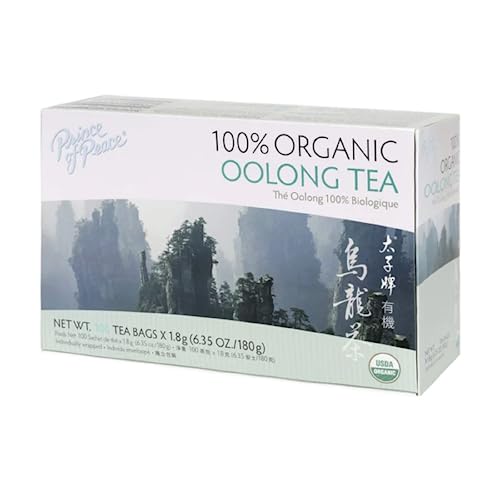History of Oolong Tea
There are differing stories on the actual origins of oolong tea, with both Chinese and Taiwanese regions claiming that the tea originated from there. The earliest accounts of the consumption of oolong tea date back to the Tang Dynasty which was between the 7th and 9th centuries.
According to one story, oolong tea was first known as Beiyun Tea as it was found in the Beiyun region in the Fujian province. The name Wulong means ‘black dragon’ and was coined due to the dark color and shapes of the tea leaves. The tea leaves are long in length, twisted into different shapes resembling a dragon. Another story claims the tea is named after a farmer named Wu Liang who accidentally made this tea himself after leaving his leaves to oxidize for too long.
Wherever they originated, oolong teas are now grown in cool mountainous regions over terrain that is steep and rocky. With time the tea began gaining popularity all throughout the country, and it is now a staple in many Chinese and Taiwanese households.
Types of Oolong Tea
Oolong Tea doesn’t fall under the category of black tea or green tea, in fact, it lies somewhere between the two. It is mostly consumed by people in the East Asian regions of China and Taiwan. Depending on the region, you can find a lot of diversity in oolong teas, with some closer in quality to green tea, and others resembling black tea. This can be reflected in modern oolong tea products as well, where the type and taste may change according to where the tea has been originally produced.
In Taiwan, the most popular way of preparing oolong tea is where it is not as oxidized. The oxidation amount found in Taiwanese oolong teas is typically 10-40%, making them closer to green in color and light on the palette as well. The preparation style of oolong tea also differs according to the region, with some rolling leaves into tight balls, and others twisting long strands. Even the method of growing oolongs can vary, with some farmers harvesting in spring for a more herbal flavor, and others in winter for a wood-like touch.
Health Benefits of Oolong Tea
There are many health benefits to consuming oolong tea, and it is one of the reasons why they are so popular in China and Taiwan.
Weight Loss
Green and black teas are well known for their fat-reducing properties, and this claim is even backed by medical experiments. One study in China conducted on overweight and obese adults studied the effect of consuming oolong tea and whether it resulted in any reduction in weight. The participants of this study were made to drink 300 mL of oolong tea four times in a day. The experiment lasted six weeks and showed that the majority of the subjects lost over 1 kilogram in weight.
Heart Disease
Heart disease is another health benefit of consuming oolong tea. With the recent food habits of modern adults, high cholesterol is more of a problem than ever, but oolong tea can help reduce the risk. Chinese researchers conducted a study on this and found that those individuals who took over 10 ounces of oolong tea every week had lower bad cholesterol than those who didn't. General drinkers of oolong tea were overall healthier and had less of a risk of heart disease.
Diabetes
Continued consumption of oolong tea can be great at keeping your sugar levels at bay, This is backed by some studies showing that a frequent 2-3 cup per day consumption can reduce the risk of Type 2 Diabetes.
Cancer
According to scientists, the antioxidants which are found in black and green teas can help combat cancel cell mutations in the body. There have been multiple studies experimenting on the effects of oolong tea on the prevention of cancer with varied results. Connections have been found between taking oolong tea and reduced risk fo lung, liver, neck, pancreatic, and other types of cancers.
Dental Health
One ingredient that is mostly used to help prevent dental cavities is fluoride, being added to common toothpaste and mouthwashes. Tea leaves naturally contain this ingredient, so the regular consumption of tea can help reduce the risk of cavities.
How Oolong Tea is Made
The process with which oolong tea is made is very detailed and tedious. All types of tea, whether they are black, green, or oolong, come from the Camellia sinensis tea plant. The difference between the three is how this plant is cultivated, harvested, oxidized, and later processed.
The first step in this process is bruising tea leaves when they are still fragile. This is done by tossing or shaking the leaves in their fresh state, and is necessary to start the important oxidation process. The leaves are then dried out in the sun for many hours, letting them wither and lose some moisture. This process will allow the leaves to become more flexible and easily rolled and shaped. After withering comes cooling, where the leaves are cooled. Then the leaves are lightly rolled and bruised, which releases essential oil into the leaves, giving them flavor.
The leaves are then oxidized, where their flavor is altered and the final appearance and taste is determined. The amount of time the leaves oxidize is what varies from farmer to farmer, with oxidation levels anywhere between 10% to 80%.. The final steps in this process are roasting, drying, and sorting, after which the oolong tea leaves are ready.





